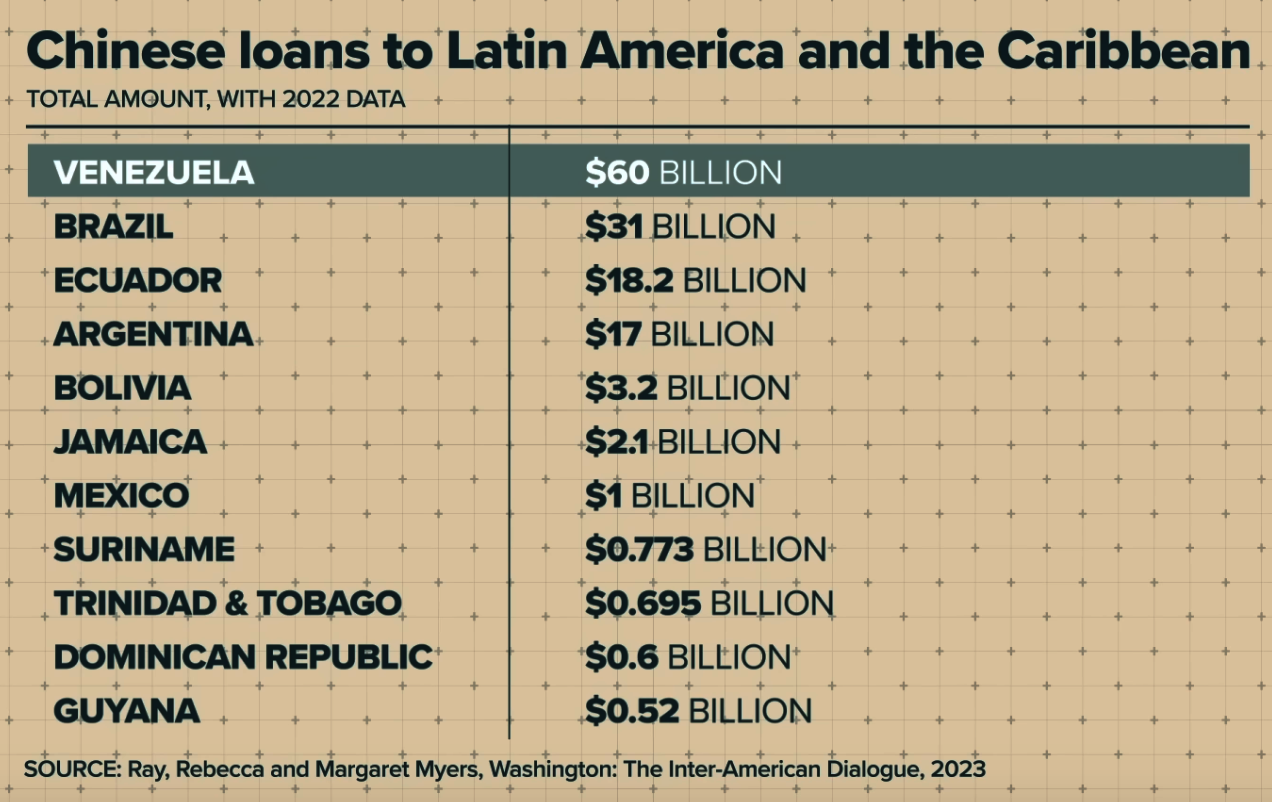
China’s growing influence in Latin America and the Caribbean has been marked by significant economic engagement and strategic partnerships. In 2021, China emerged as the second-largest trading partner for the region, with trade volumes reaching nearly $450 billion, a remarkable increase from just $12 billion in 2000—an increase of almost 40 times. This surge in trade is largely driven by China’s demand for soybeans, which is crucial for addressing its domestic food security challenges.
From 2005 to 2020, Chinese investment in Latin America surpassed $130 billion. Notably, Brazil received around $60 billion, while Peru and Chile each attracted $27 billion. Argentina benefited from $12 billion in Chinese official foreign direct investment. The implications of such investments are complex; for instance, Venezuela serves as a cautionary example of the risks associated with substantial loans to economically struggling nations.
Belt and Road Initiative
The Belt and Road Initiative (BRI) is a comprehensive infrastructure and development strategy initially designed to connect East Asia with Europe. However, its scope has expanded to include Africa and Latin America. By 2022, Argentina became one of 20 countries in the region to formally join the BRI, which has shifted investment focus from traditional sectors like materials and energy to a broader range including consumer goods, financial services, industrial products, telecommunications, and utilities.
Joining the BRI is often seen as a means for countries to enhance their diplomatic relations with China, positioning themselves favorably within the geopolitical landscape.
Economic and Political Implications
China’s increasing presence in Latin America has raised both opportunities and concerns. While it offers economic benefits, such as infrastructure development and access to Chinese markets, it also poses risks related to dependency and political influence. The U.S. has expressed apprehension over China’s ambitions, viewing its growing ties as a challenge to American influence in the region.
China’s strategic investments and diplomatic outreach, particularly during the COVID-19 pandemic, have solidified its role as a key player in Latin America. The distribution of medical supplies and vaccines further enhanced its image as a reliable partner, contrasting with the U.S.’s inconsistent diplomatic engagement.
As Latin American countries navigate these evolving dynamics, they must weigh the benefits of Chinese investments against the potential for increased economic dependence and the implications for their sovereignty and political stability. The future trajectory of these relationships remains uncertain, influenced by both regional political developments and global economic trends.
Need a strategy to source raw materials in South America? Looking for long term partners? Talk to us.